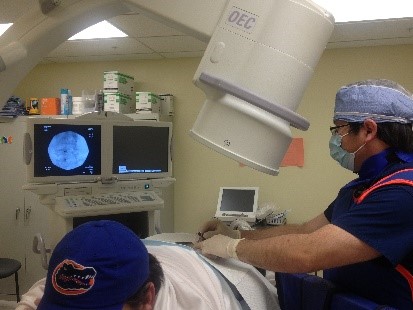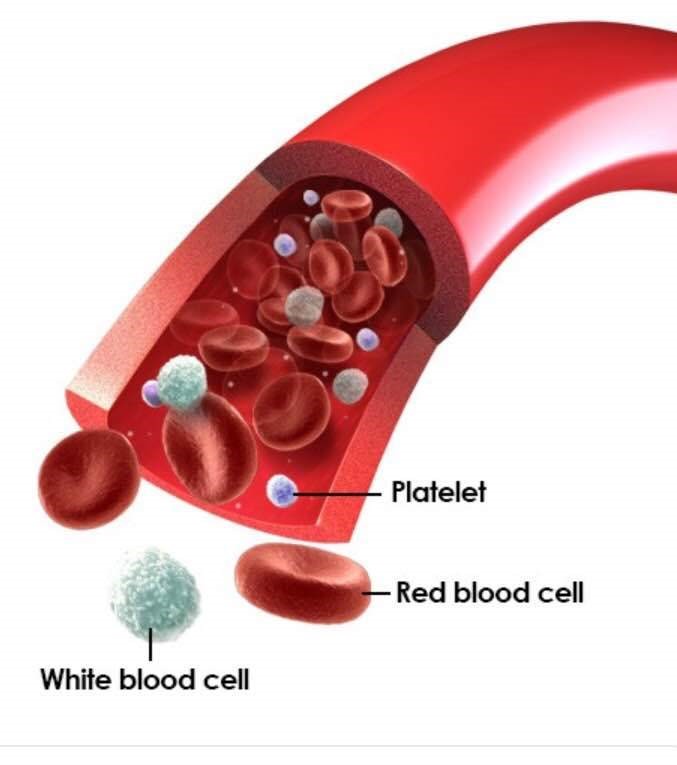
Regenerative Medicine Explained
By SIMED Pain Management Dr. Rigoberto Puente-Guzman
When tissue is injured, an inflammatory process develops that begins the recovery process. Unfortunately this inflammatory process can result in long-term tissue injury and can lead to pain, tightness, and loss of motion. However there are ways to use the inflammatory process in a restorative fashion to minimize the long-term consequences of injuries. Regenerative medicine utilizing your own platelet rich plasma is now offered at SIMED for treatment of acute or chronic pain conditions involving tendons, ligaments, discs, and joints.
Prolotherapy regenerative medicine with platelet rich plasma (“PRP”) injected into the injured tissue stimulates the proliferation (rapid cell growth) and repair of the injured tissue by triggering the inflammatory condition in a way that leads to tissue regeneration rather than injury. The term “prolotherapy” is short for proliferation therapy – it stimulates the prolifera
tion and repair of injured tissue. Current mainstream treatment options used today include: non-steroidal anti-inflammatory drugs (“NSAIDs”), steroids, physical therapy, chiropractic strategies, splinting, bracing, ice, heat, electrical stimulation, ultrasound, and surgery. These common treatments do the important tasks of trying to limit the extent of injury but don’t proliferate (rapidly increase) tissue repair of the injured site.
Platelet Reach Plasma (PRP) treatment is based on the theory that a high-density concentration of your circulating platelet levels isolated and concentrated can improve the natural healing capability of the body. This is possible when platelet concentrations are increased within injured or damaged tissue. Platelets contain key signal proteins, growth factors, chemokines, cytokines, and other proinflammatory factors that initiate and regulate basic aspects of the inflammatory cascade resulting in natural wound healing which then stimulates the proliferation, differentiation, and migration of needed mesenchymal and stromal repair cells to an injury site.
How It Works

Platelet Reach Plasma Prolotherapy is performed by your physician by injecting the highly concentrated PRP directly into the injured area. This is accomplished by obtaining some of your blood using a simple, sterile venipuncture technique. The blood is then processed in a specialized centrifuge separating the blood into three main layers: the cellular layer containing red and white blood cells, the platelet rich layer, and the platelet poor or plasma layer. The platelet rich layer is withdrawn from the specimen tube and then injected into the injured site (for example the knee, hip or other joints, tendons, disc, etc.). The injection is commonly performed under ultrasound or fluoroscope imaging guidance.
After the injection, you will be instructed to avoid use of NSAIDs and steroids, as well as, avoid extraneous exercise or use of affected site for about two weeks to allow the regeneration process to take hold. After these two weeks, the rehabilitation process with exercise and physical therapy can be started with emphasis in preserving the continued healing process by gentle range of motion and gradual strengthening exercises. Should the benefits of PRP prolotherapy plateau prior to full recovery autologous stem cells obtained from your fat or bone marrow, combined with PRP concentrates can be an effective alternative.
Who is a candidate for PRP prolotherapy?
Any patient that has an acute or chronic musculoskeletal pain condition may consider PRP treatment. Although this injection can be used after standard strategies are not effective it may also be considered as first line of treatment. Also patients who are not able to undergo surgery, or just want to avoid surgical intervention can consider PRP injections. Common diagnosis treated include, but are not limited to joint or back pain due to arthritis, spine degenerative disc pain, knee meniscal tears, shoulder rotator cuff tendinopathy, tennis elbow, and ligament injuries.
Who is not a candidate for PRP injection?
Any patient with a bleeding disorder, platelet dysfunction or low levels of platelets, on blood thinning medications they cannot come off of, chronic liver disease, diseases or illnesses suppressing the immune system, chronic

steroid use, current infections, blood or bone cancer have contraindications for this procedure. Patients must also stop the use of NSAIDs within 48 hours of having the procedure, steroid shots at the treatment site within one month, systemic use of steroids within 2 weeks, tobacco use, and uncontrolled diabetes mellitus. Dental work also needs to be avoid for three weeks before and after the procedure.
Although this is now a widely accepted treatment option PRP prolotherapy is still an evolving science and considered experimental by many health insurance carriers. Therefore it is not yet a covered benefit for most insurance carriers.
You can learn more about PRP Prolotherapy and whether it’s the right treatment option for you by seeing one of SIMED’s Gainesville Physical Medicine & Rehabilitation or Interventional Pain Management physicians, or in Lady Lake/The Villages at SIMED’s Hand Center.
Call SIMED Gainesville Physical Medicine and Rehabilitation: (352) 373-4321
Call SIMED Gainesville Interventional Pain Management: (352) 224-1813
Call SIMED Lady Lake/The Villages Hand Center: (352) 751-0981